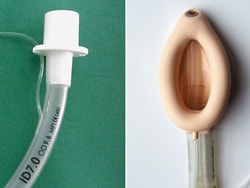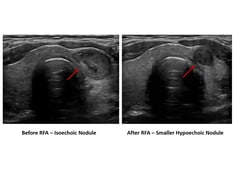Determining what type of airway management strategy to implement for a patient having an out-of-hospital cardiac arrest (OHCA) is a complex decision that involves a broad range of variables.
In a multicenter, cluster randomized, prospective clinical trial published in JAMA ,[1] researchers analyzed 9289 patient encounters from four ambulance services in England between June 2015 and August 2017 to determine whether using a supraglottic airway device was superior to tracheal intubation in patients experiencing OHCA.

Inclusion criteria required patients to be older than 18 years of age and to have had a nontraumatic cardiac arrest. A total of 764 paramedics were randomly assigned to perform tracheal intubation, and 759 paramedics were randomly assigned to perform supraglottic airway device placement.
The primary outcome was a modified Rankin Scale score at hospital discharge or 30 days after OHCA. The modified Rankin Scale score was divided into good (scores of 0 to 3) and bad (scores of 4 to 6) outcome subgroups. Secondary outcomes included ventilation success, regurgitation, and aspiration.
Overall, 4886 patients received the supraglottic airway device and 4410 patients underwent tracheal intubation. Of the patients in the supraglottic airway device group, 6.4% had a good outcome compared with 6.8% of patients in the tracheal intubation group.
The researchers concluded that use of a supraglottic airway device did not result in favorable neurologic outcomes at 30 days when compared with tracheal intubation. Ventilation was significantly more likely to be successful after up to two attempts in the supraglottic airway device group compared with the tracheal intubation group.
Viewpoint
In this study, researchers hoped to identify whether there was a statistically significant difference in neurologic outcome in patients who had a supraglottic airway insertion versus tracheal intubation. The data showed no such difference.
That being said, the study highlights the intricacies of airway management, particularly in patients experiencing cardiac arrest. Subgroup analysis revealed that it was generally faster for paramedics to establish a supraglottic airway than perform tracheal intubation, but that supraglottic airways were more likely to become dislodged or require replacement. Researchers also found that the incidence of aspiration and regurgitation was more likely after supraglottic airway placement but before tracheal intubation.
The researchers made interesting observations about the decision-making process for the type of airway to use. It is crucial to frame this study within the context of the prehospital setting. Although the numbers of paramedics randomly assigned to each trial arm were roughly the same, paramedics in the supraglottic airway group were more likely to perform this advanced airway management technique than paramedics in the tracheal intubation group. Supraglottic airway management generally requires less prowess than tracheal intubation, can take less time to perform, and may be useful in resource-limited settings where prehospital professionals have less time and equipment to perform advanced airway management.
There are important limitations to the conclusions of this study, including the prehospital setting, crossover between the two trial arms, and the fact that paramedics enrolled in the study were volunteers, and these may further affect the generalizability of the results. Even though this study did not demonstrate a clinical difference between the two groups, I do not believe it makes supraglottic airway use less advisable or warranted. My takeaway from this study is that multiple factors are involved in determining what type of airway management to deploy, and going into a particular patient encounter with a predetermined and rigid plan to use a supraglottic airway versus tracheal intubation is probably not the way to go.
In my clinical practice, especially based on the airway management training I received during my residency, I do find that the quick use of a supraglottic airway can be effective in patients experiencing a cardiac arrest that does not have a primary respiratory cause. However, I believe the available data compel us to perform one type of airway management over another. I still need to analyze multiple variables in each case and determine what is best for the patient in front of me at the time. If I have limited resources and have to perform advanced airway management and run a resuscitation myself, it may be helpful to have staff place a supraglottic airway while we prioritize other aspects of the resuscitation. If patients are already experiencing complications related to their airway, such as bleeding, aspiration, or trauma, it becomes a bigger priority for me to perform immediate advanced airway management while other aspects of the resuscitation are performed.
Follow Medscape on Twitter for more emergency medicine news: @Medscape
Medscape Emergency Medicine © 2018 WebMD, LLC
Any views expressed above are the author's own and do not necessarily reflect the views of WebMD or Medscape.
Cite this: Sumit Patel. Any Advantage of Using a Supraglottic Airway Device Over Tracheal Intubation in OHCA? - Medscape - Nov 30, 2018.










Comments